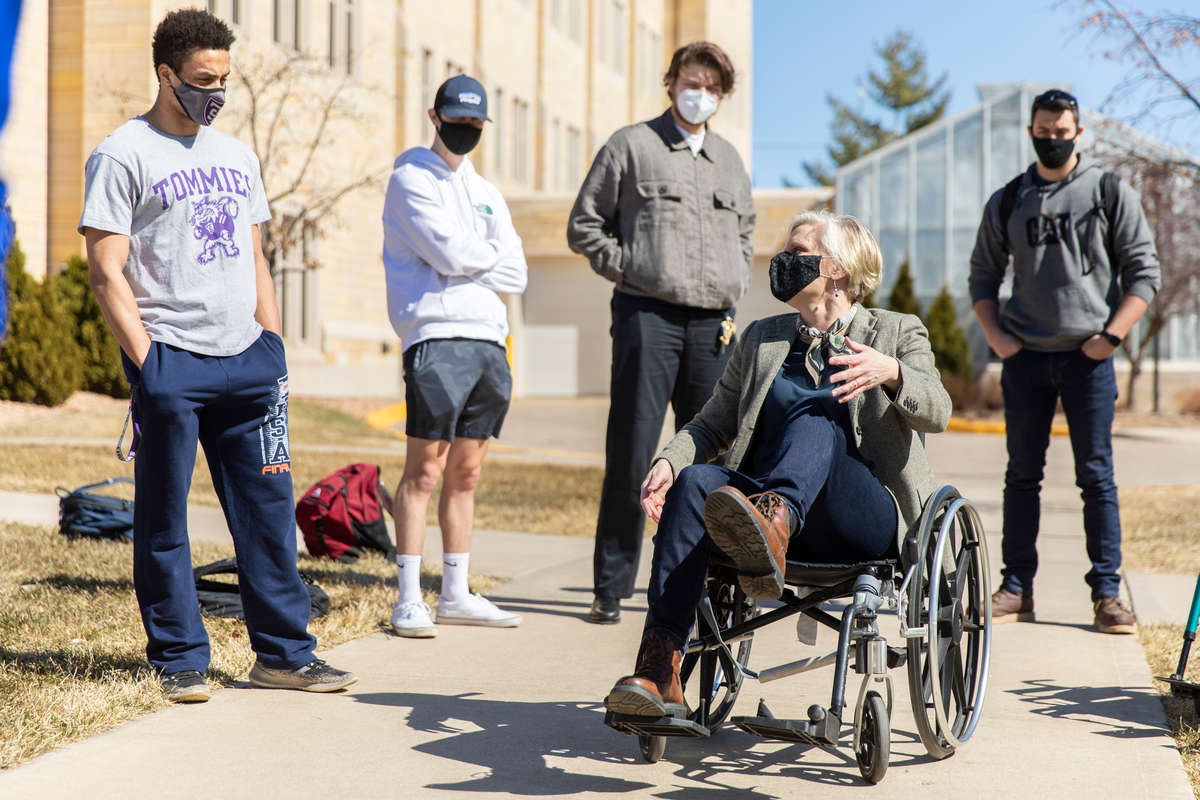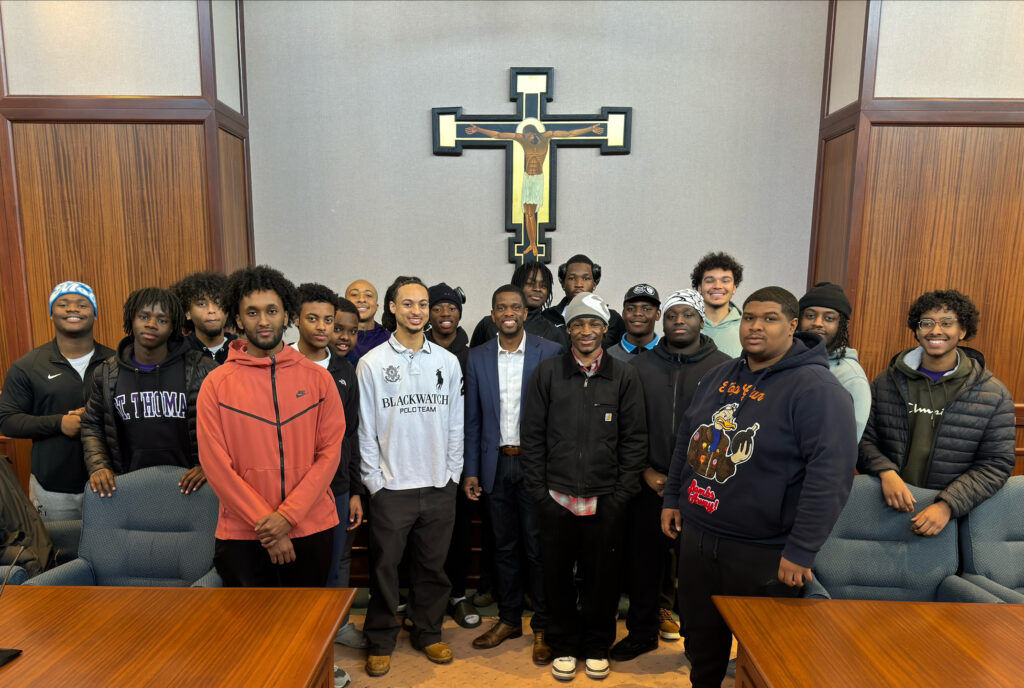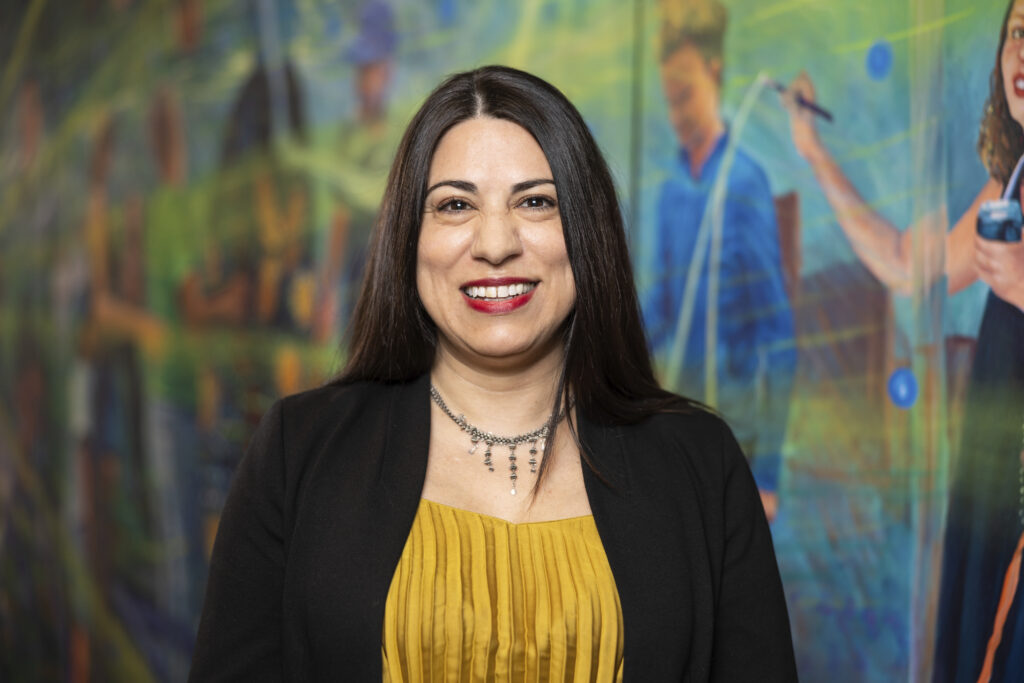Ask a mechanical engineer to solve a technical problem, and they will likely have an impressive technical solution at the ready. At the University of St. Thomas School of Engineering, Dr. Jenny Holte is urging her students to resist the urge to provide an immediate solution without fully understanding the needs of the end user.
“Empathic design really focuses on observation,” Holte said. “Rather than just asking your stakeholders which features they wish they had, you observe their interactions with the product and their surroundings. The engineering may notice problems and workarounds that the user has taken for granted.”
In her Engineering 320 course, Holte challenges her students to put empathic design to the test by asking them to design improvements to the standard wheelchair. The project begins with a brainstorming session where students can offer up their thoughts for potential improvements.
“One person actually came up with a robotic arm that would swing out to grab things,” Max Meves ’22 said, recalling the wide breadth of initial ideas ranging from cup holders to gearboxes.
Though the brainstorming session results were creative, the next phase of the project would force students to confront the challenges faced by the end user and reconsider the value of their solutions. In teams of three, students took turns completing various tasks as wheelchair users while others guided and observed.
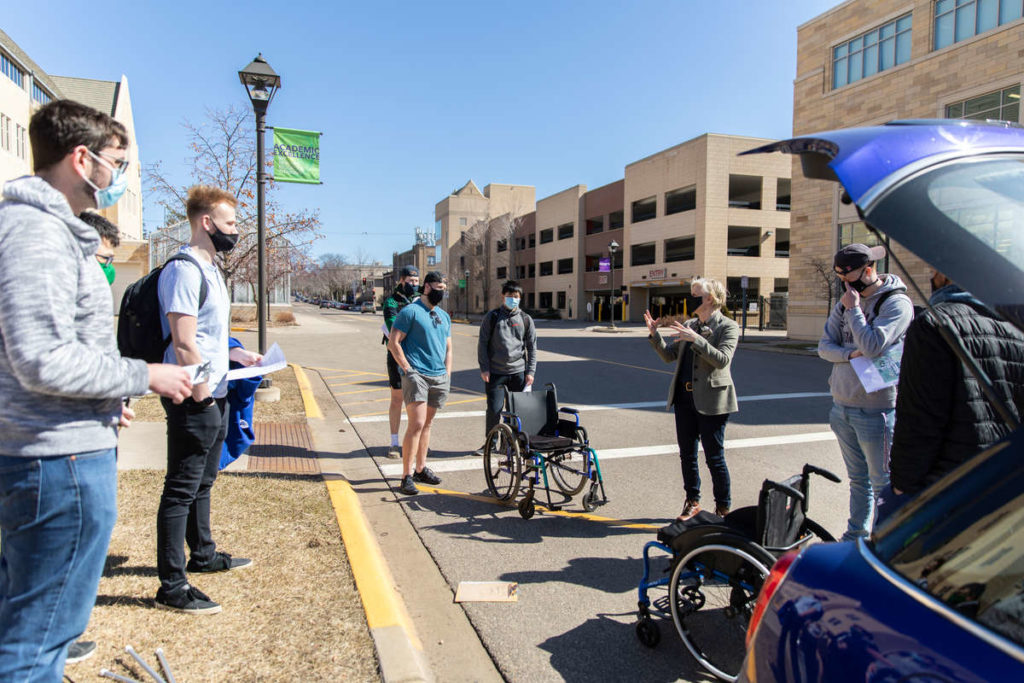
“I asked them to put the wheelchair in my car, and then they started having to think about how much it weighs,” Holte said. “So if before they were talking about adding gears and drivetrains and cup holders, hopefully it’s starting to click for them that these things will add a lot of weight or it’s going to be bulkier or mean more pieces that users have to take off when they put the chair in the car. They’re thinking about things they hadn’t thought about in the brainstorming discussion.”
The experience of using a wheelchair gave Mahamed Abdi a new appreciation for the immense challenges facing wheelchair users and caused him to scrub his initial brainstorming completely.
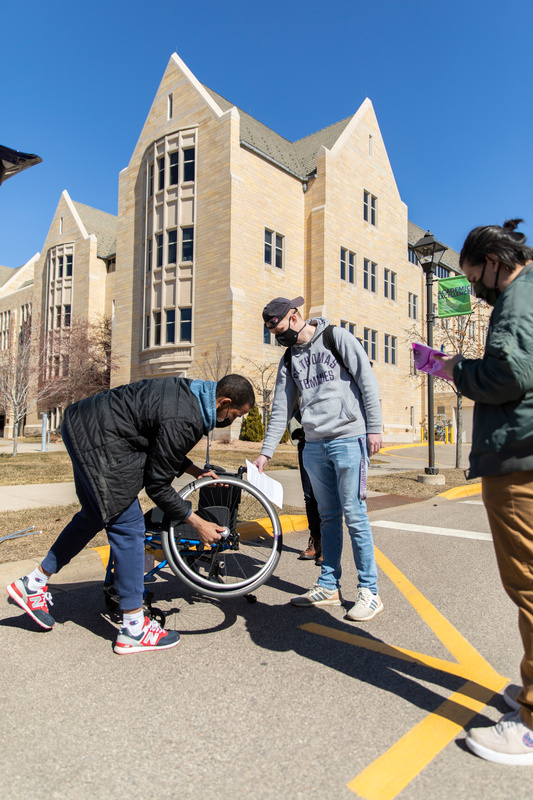
In the follow-up written assignment, Abdi reflected on his experience. “I never thought using a wheelchair could be so difficult. I wonder if these people in front of me will hold the door for me, and I hope I can make it down this ramp safely!
“At the end of the class exercise, I was elated to get off, giving a rest to my aching muscles and allowing my hands to warm up,” Abdi wrote. “By first brainstorming and then interacting with the wheelchair, it allowed us to take a step back and really determine some of the more important ideas we should prioritize. It also showed what ideas should go on the backburner.”
Empathic design requires an engineer to focus on more than just the object at hand.
“The students start to realize how the environment plays into it as much as the chair,” Holte said. “As an engineer, you need an awareness that maybe the chair is not the main thing that needs to be modified.”
The environment presented immediate and obvious challenges that Meves had never considered. “Going through doorways, I thought I was going to hit my hands every time because doorways are a lot skinnier when you’re sitting in a wheelchair,” he said.
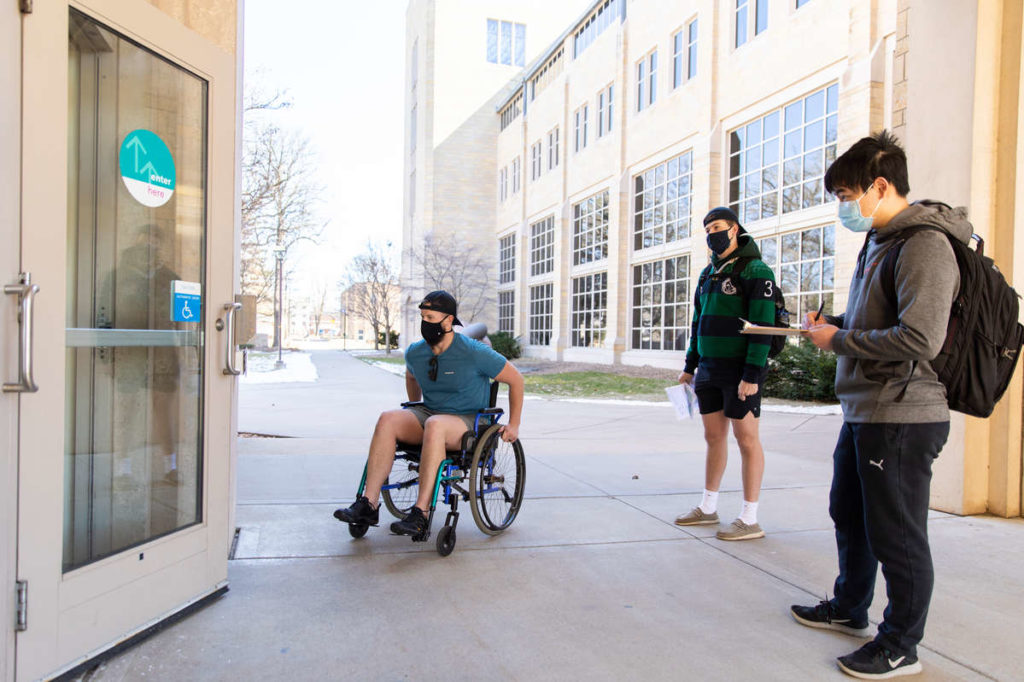
The exercise presented solutions that Meves couldn’t have anticipated without the direct observation inherent to empathic design. “Going uphill and downhill was interesting because you have to be able to control yourself. You have to be careful not to lean too far backward, or you might fall, so we considered whether to add safety precautions for going uphill,” he said.
For Holte, the concept of empathic design is less about altruism and more about driving solutions that address the highest priorities of the end user.
“We’re trying to make sure that we’re creating well-rounded engineers who understand that it’s not just technical problems that we’re solving,” she said. “In order to create value, you have to understand the interactions with the humans involved in the problem.”
